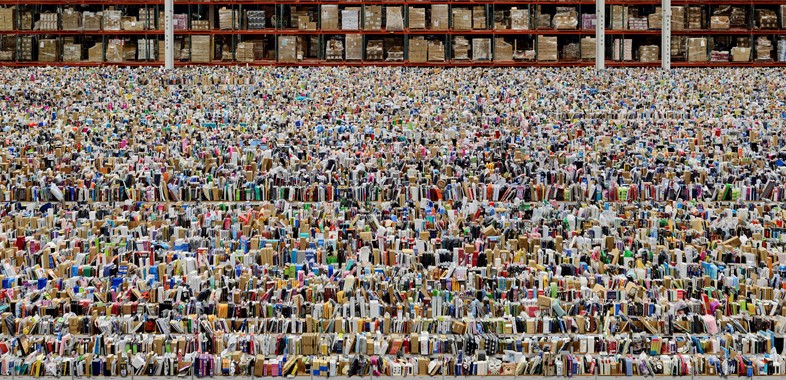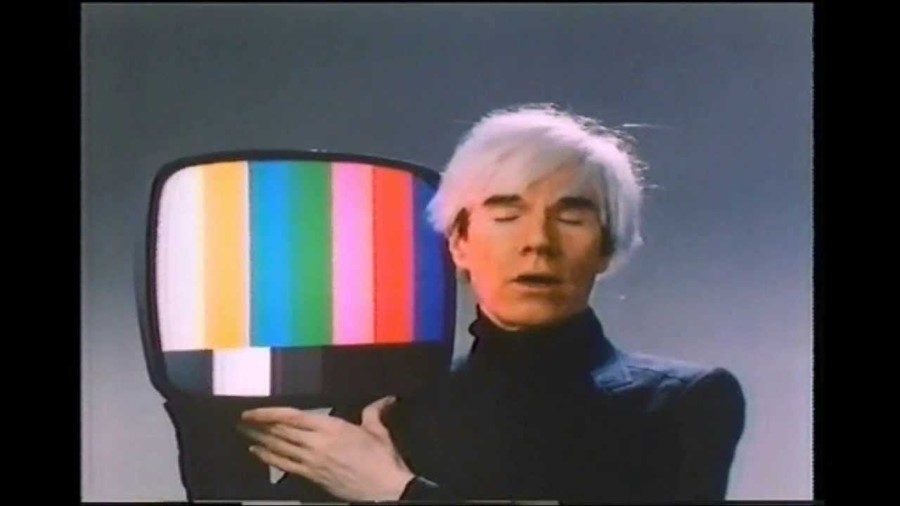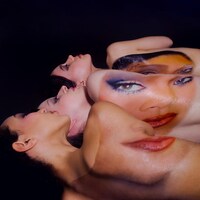From Caravaggio to Warhol, Yayoi Kusama and Amalia Ulman, these works ask: does art imitate life or life imitate art?
In 1889, author Oscar Wilde penned in The Decay of Lying that life imitates art. “The self-conscious aim of life is to find expression,” he wrote, “and art offers (life) certain beautiful forms through which it may realise that energy.” According to Wilde, what we find in nature and in life isn’t really there, and that what we do find is what artists have taught people to find there, through art. So does art imitate life, or does life imitate art? And under this questioning, does art have the ability to predict the future? “Artists often channel the future,” art critic Jerry Saltz told Vulture in 2017, ”seeing patterns before they form and putting them in their work, so that later, in hindsight, the work explodes like a time bomb.”
This is a debate that can reach existential degrees. Take the fatalists, for example, who wonder if isolated traumatic events can somehow send echoes backwards and forwards in time to generate recurring themes across art-history, while others argue that we project our modern-day anxieties onto what we want to see in the past, therefore creating what is seen as a prediction of the future. But either way, there are quite a few artworks that make a strong case for art’s ability to predict the future. And living in 2018, many tend to reflect on our obsession with technology, with some ideas dating back as early as 8AD and as recent as 2014. Below, we chart seven of our favourites.
MICHELANGELO CARAVAGGIO – “NARCISSUS” (1597–1599)
The earliest mention of Narcissus on record runs back to 8AD, in Roman poet Ovid’s text Metamorphoses. One of the most-known tales in ancient Greek mythology, the young hunter was known for his beauty and extraordinary physique. He was so proud of it that he rejected anyone who showed interest in him with disdain and contempt. Nemesis, the goddess of retribution and revenge, saw how Narcissus treated others and decided to punish him. She lead him to a pool where he became utterly besotted by his own reflection. Unable to tear himself away from his own image, Narcissus drowned in his own reflection. In 1597-99, Baroque master painter Caravaggio bought the tale of Narcissus to life for what would become one of his most famous paintings. Made using the classic brown and red hues of Baroque paintings, Caravaggio’s “Narcissus” is a freakishly accurate visual prediction of the world in 2018: one obsessed with self-image. Over 400 years later, if you’ve ever had a mega selfie session, some might say that you’re channelling the OG self-obsessive. But you’re not alone – there are reportedly 93 million selfies uploaded to Instagram every day. Taking this idea even further, Renaissance theorist Leon Battista Alberti says that Narcissus as a mythological figure predicted the art of painting. "...The inventor of painting ... was Narcissus,” Alberti penned in 2012. ”...What is painting but the act of embracing by means of art the surface of the pool?"
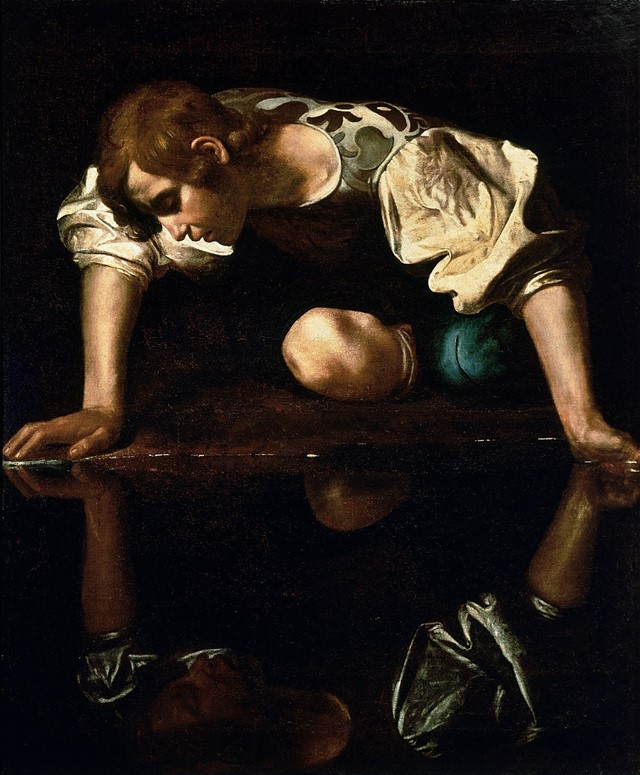
ANDY WARHOL – 15 MINUTES OF FAME (1968), & “SELF-PORTRAIT WITH SKULL” (1977)
Andy Warhol was such a fundamental part of popular culture during his nearly 40-year career that his works had the ability to foretell the popular culture that would unfold years after his death in 1987. In 1968, Warhol said, “In the future, everyone will be world-famous for 15 minutes” – predicting the ephemerality that would become post-modern celebrity culture. Whether it's one-hit wonders like Daphne & Celeste’s “U.G.L.Y” (2000), or Nikki Grahame's rise to celebrity after Big Brother and quickly washed away by the tabloids, Warhol understood that the channels for reaching fame were expanding at an exponential rate, and that the digital revolution, especially the onset of social media, would only bring about wider reaching fame. “15 minutes of fame” also indicates a short-lived obsession with someone or something – it’s as if Warhol could foretell the way in which viral moments and memes now sweep across the internet before our attention is garnered by something more absurd.
In 1977, Warhol produced “Self-Portrait with Skull” that can be seen as carrying on Caravaggio's prediction of selfie culture. The series features self-portraits of a nonchalant Warhol with a skull placed on different parts of his torso, creeping around from on top of his head, to his left and right shoulder. The images reflect a strong relationship between self-image and mortality. Warhol's “Self Portrait with Strangulation” (1978) series follows the same theme of self-image and death as it features a set of pop-art washed images of Warhol's self-image strangling him. Are these two series of images a foretelling of the way selfie-culture suffocates us and our mental health?
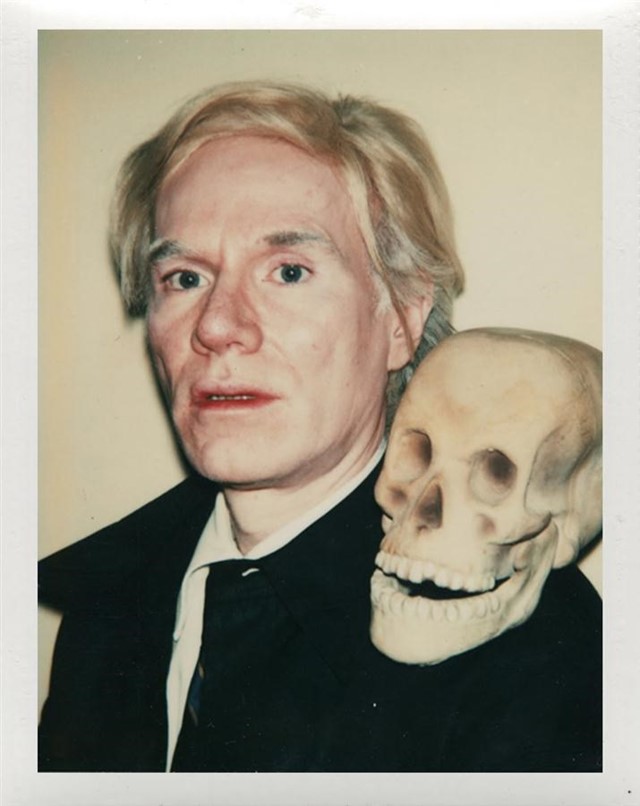
YAYOI KUSAMA – INFINITY ROOMS
“Polka-dots can't stay alone; like the communicative life of people, two or three polka-dots become movement... Polka-dots are a way to infinity.” Japanese artist, Yayoi Kusama, has been always been deeply obsessed with the idea of infinity, so much so that every Kusama artwork ever made has immersed the audience in infinite objects and patterns. Whether it’s getting lost among her thousands of hand sculptured orange and black pumpkins or being totally consumed by her white and red polka-dots, when you experience Kusama’s works, you feel as if you are floating infinitely. This can be said particularly of the 20 Infinity Rooms that Kusama has made across her career: the feeling of which has been likened to the internet. Her earliest one, “Infinite Mirror Room – Phalli’s Field”, was made in 1965 as a space of radical connectivity and profound isolation. Photos of “Infinite Mirror Room” feature Kusama engulfed by a sea of red and white, phallic shaped objects covered in red and white polka dots. The objects are surrounded by a sea of mirrors, creating a visual hallucination of a never-ending field of phallicism.
In this never-ending net of patterns and the infinite feeling of the work, it’s said that Kusama foretold the internet over 25 years before it was launched by Tim Berners Lee in 1990. Just like the feeling of being in one of Kusama’s infinity rooms, the internet connects objects while also creating a sense of solitude. “Infinite Mirror Room – Phalli’s Field” also stands as a prediction for the way mirrors and reflective surfaces would increasingly come to be used in the gallery world. After the rise of iPhones and witnessing how mirrors worked to engage more and more of the audience, galleries started to slowly introduce mirrors into their spaces. In this sense, Kusama is a foreteller for the way in which art is consumed.
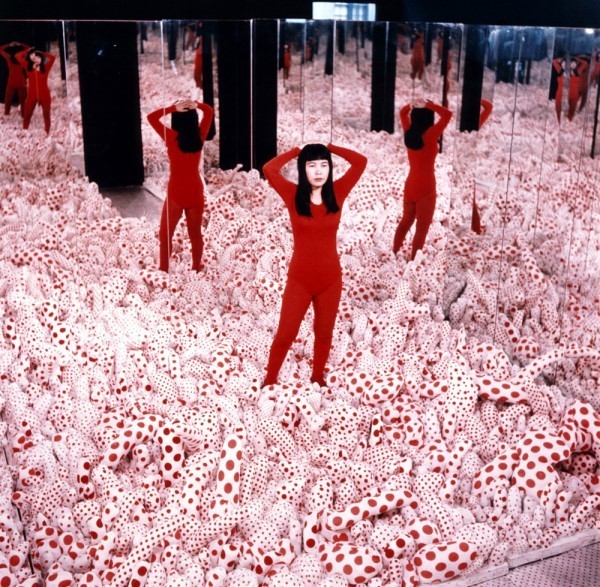
JOSEPH BEUYS – SOCIAL SCULPTURE (1970s)
In the 1970s, German conceptual artist Joseph Beuys created the social sculpture theory. The idea proposed that everyone has the potential to be an artist, based on the concept that everything in the world can be approached creatively, aka anything can be art. Under this idea, it can be said that Beuys predicted the democratising effect social media would have on accessibility and opportunity in the art world. In Beuy’s view, society itself is a work of art, thus every human its creator.
Beuys’ 1982 contribution to Documenta 7 brought the idea of the social sculpture theory to life. In “7,000 Oaks” (1982), Beuy arranged a large pile of stones in the shape of an arrow pointing to an oak tree that he had planted. He then announced that the stones should not be moved until more oak trees were planted. In reaction to his work, 7,000 oak trees were planted. This artwork exemplifies the participatory and inclusionary potential of art, much of which has been echoed by social media. Since its conception, social media, particularly Instagram, has expanded art world accessibility. No longer having to rely on the institutionalisation of the elitist art world, emerging artists can now use social media as personal platforms for showing their work, dismantling traditional gallery concepts, while also using social media to connect directly with their audience and escape the confines of art world patriarchy. As Beuys stated in a speech on freedom, democracy and socialism in 1974: “Only art is capable of dismantling the repressive effects of a senile social system that continues to totter along the deathline: to dismantle in order to build ‘A SOCIAL ORGANISM AS A WORK OF ART’… EVERY HUMAN BEING IS AN ARTIST.”

AMALIA ULMAN – “EXCELLENCES & PERFECTIONS” (2014)
If you were following artist Amalia Ulman on Instagram in 2014, the chances are you were fooled by her genius artistic hoax “Excellences & Perfections”. Dubbed by art critics as the “first Instagram masterpiece”, Ulman spent four months curating an Instagram feed that followed the life of an aspiring it-girl’s quest for perfection in Los Angeles. From boob jobs, to clean eating, to being a sugar baby, Ulman’s performance went through three transitory stages to perfectly curate a fake personal brand that fooled over 90,000 of her followers. Not only was the show aimed at demonstrating how easily duped we are by content in the digital age, but it was a prediction of how social media would become a platform for the curation and ‘perfection’ of personal branding online.
A year later, an Australian model with over 612k followers quit Instagram, and stated that the platform was “contrived perfection made to get attention.” In 2018, lifefaker.com launched as a website where you can buy photo packages for your Instagram like the “The My Weekend Was Amazing Thanks Package’ or “The Look What I Had for Lunch Package”. However, the website was actually a campaign aimed at raising awareness about the detrimental effects social media has on mental health, bringing the aim behind Ulman’s hoax back to life four years after its creation.

UMBERTO ROMANO – “MR PYNCHON AND THE SETTLING OF SPRINGFIELD” (1937)
In 1937, Umberto Romano painted a scene based loosely on the events of a pre-revolutionary war in present-day Massachusetts. The painting depicts violence between members of two New England tribes as they battle to save their land from English settlers. There is a man hand tied to a plank of wood, while another man appears as if he is about to be executed. But among the calamity, there’s a moment of stillness in the bottom right-hand corner of the painting, where a man sits in a boat and appears to be holding...an iPhone?
Before the iPhone’s creation, this may have just looked like a stone tablet, but the way in which the man is interacting with the device appears as if he’s just taken a break from his blood thirst to check his Instagram notifications. This isn’t just seen as a prediction of the iPhone, but our interactions with the smartphones: breaking from reality, no matter how intense it may be, to be utterly consumed by what’s on screen. Just as this painting shows, smartphones have become so permanently attached to our arms that even if there was a war brewing 20 meters from us, we would still have our iPhones out, filming our surroundings or plugging into the latest meme on Facebook.
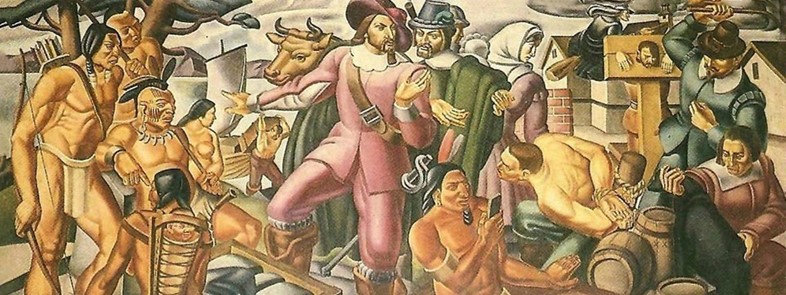
ANDREAS GURSKY – “AMAZON” (2016)
Art photographer Andreas Gursky’s works are so complex, they stand as a metaphor for our world in the information age. Whether shooting raves in Berlin, American stock exchanges, or rare performances in North Korea, the way Gursky makes his works is deeply intense, shooting multiple photos on a large-format camera before digitally stitching them together seamlessly, and the subjects they address can be seen as warnings for our technological future.
Take “Amazon” (2016) as an example. The eight foot tall, 13 foot wide, digitally stitched image features a never-ending sea of items that make up Amazon’s stock warehouse in Phoenix. The patterns created in the work are so hallucinatory, the image can be read as a prediction of how confusing, overbearing, and suffocating the political and social world would be just two years later, buried under the weight of internet capitalism and our world’s obsession with consumption. “We are seeing an algorithm made physical, a Borgesian or Kafkaesque labyrinth of causes, effects, rhythms, and ratios,” art critic Jerry Saltz explained to Vulture. “You could call it space-time: Goods stocked to be retrieved as quickly and efficiently as possible so that what we’re seeing are cross-referenced patterns and configurations of consumption — the rhythms of the way we live (and consume), but mapped in ways that are unintelligible to us.”
